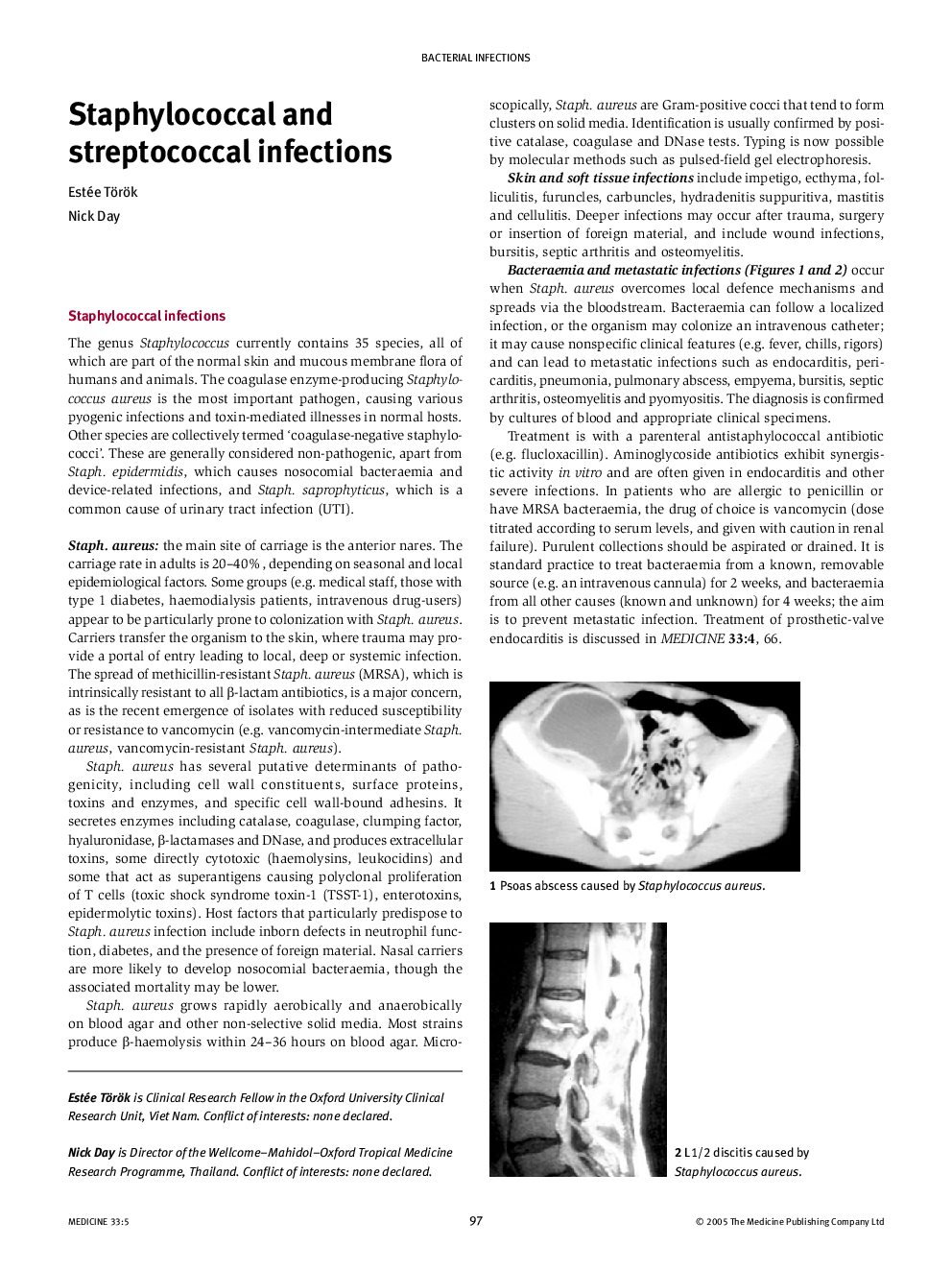| Article ID | Journal | Published Year | Pages | File Type |
|---|---|---|---|---|
| 9299628 | Medicine | 2005 | 4 Pages |
Abstract
Staphylococci and streptococci are among the most important bacterial pathogens of humans. The genus Staphylococcus currently contains 35 species. Staphylococci are Gram-positive cocci that grow in clumps, are catalase test positive and coagulase test positive (Staph. aureus) or negative (coagulase-negative staphylococci). Staph. aureus is the most important pathogen, causing a variety of pyogenic infections and toxin-mediated illnesses in normal hosts. Antibiotic resistance to methicillin and glycopeptides is becoming an increasing concern. Coagulase-negative staphylococci are generally considered non-pathogenic apart from Staph. epidermidis and Staph. saprophyticus. Streptococci are Gram-positive cocci that grow in pairs or chains. They are readily distinguished from staphylococci by their Gram-stain appearance and by a negative catalase test. More than 30 species have been identified. The classification of streptococci is complex and is based on a combination of features. Group A streptococcus is one of the most important pathogens, causing acute pharyngitis, skin and soft tissue infections, toxic shock syndrome, scarlet fever, rheumatic fever and post-streptococcal glomerulonephritis. Strep. pneumoniae is a major cause of pneumonia, meningitis, otitis media and sinusitis. Group B Streptococcus is an important pathogen in pregnant and post-partum women, neonates and the immunocompromised host. Viridans streptococci are the most common cause of endocarditis. Enterococci are a significant cause of nosocomial infections. Strep. bovis is associated with endocarditis and bacteraemia. Strep. suis is becoming increasingly recognized as a cause of bacterial meningitis and septicaemia.
Keywords
Related Topics
Health Sciences
Medicine and Dentistry
Medicine and Dentistry (General)
Authors
Estée Török, Nick Day,
